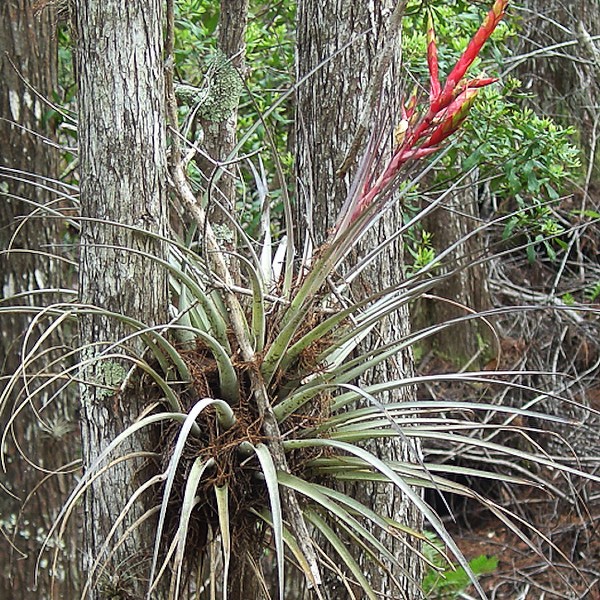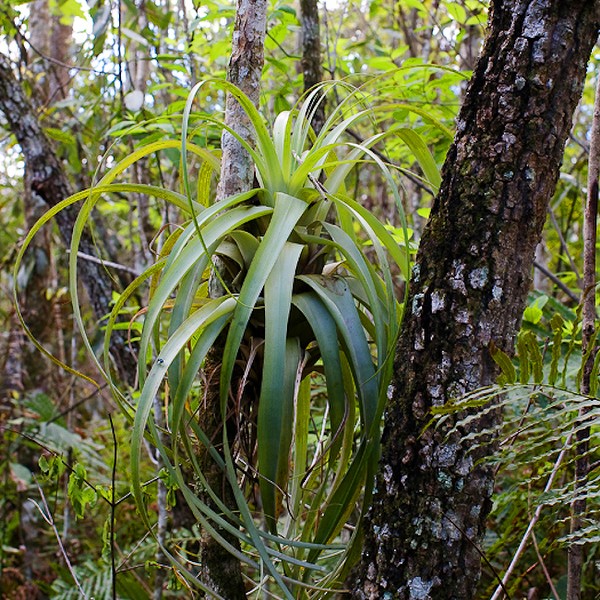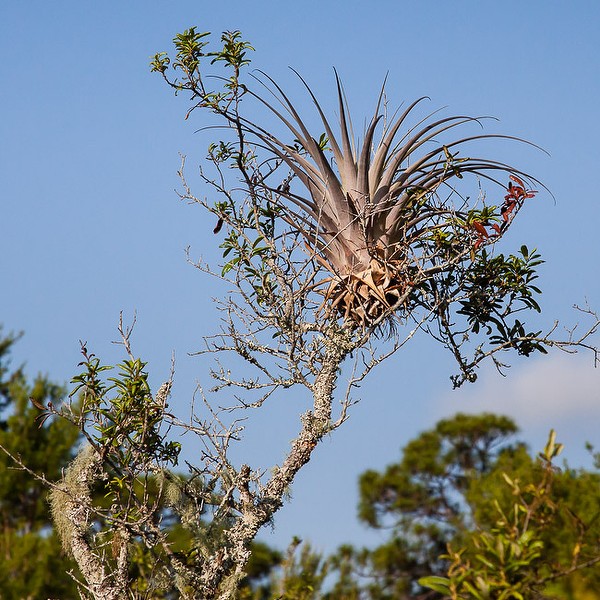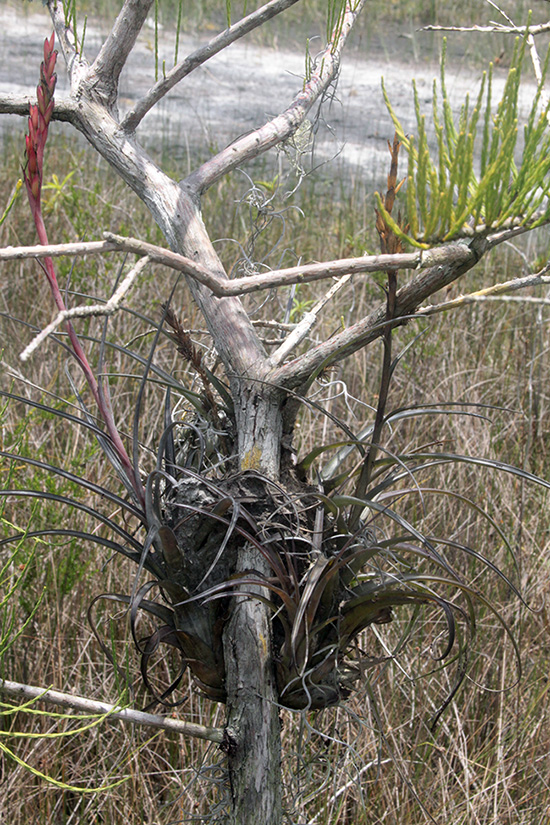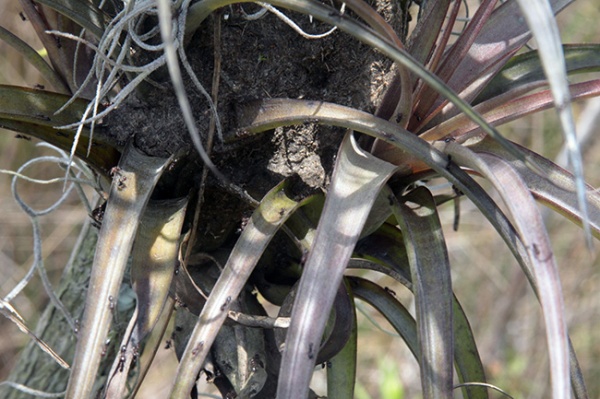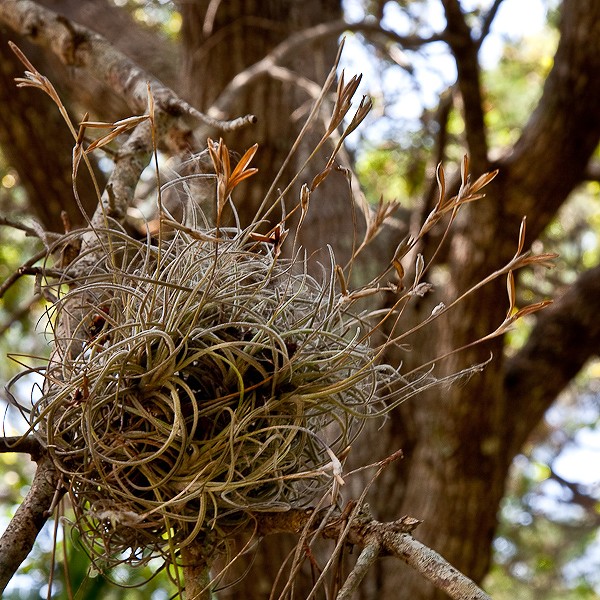Northern Needleleaf
Tillandsia balbisiana and friends
Bromeliaceae
Glossary:
Airplant = Epiphyte = Plant living perched on a bigger plant
Local examples: Ferns, Lichens, Orchids, Mosses, young Ficus, Bromeliads
Bromeliad (bro-MEL-ee-ad) = member of the plant family Bromeliaceae
Local examples: Lots of garden Bromeliads, Pineapples, wild species of Tillandsia (including Spanish-Moss, Ball-Moss, Cardinal Airplant, Southern Needleleaf and many others)
Note: Today’s photos by John Bradford except for those of the ant-colonized airplant and Potbelly Airplant. George added those in the Corbett Wildlife Management Area on June 11.
Today John and George sweated through beautiful Jonathan Dickinson State Park, where we greeted a jumbo gator and stumbled through a Bald Cypress swamp, always a fine place to find novel plants. The Tillandsia epiphytes fascinated both of us, and we enjoyed them in our individual fashions: John took a panoramic photo, and George got ants in his pants. (Truly)
Click here, if you will, on John’s Gigapan Interactive Panoramic Image. John shot this view this week in the Dupuis Management Area near Lake Okeechobee. He photoshopped in phew phlowers to phan the phlames of phun. Zoom in and out, pan around in every direction. He took this picture to be used!
Life sitting up a tree presents special challenges. When you don’t have roots in the ground, existence is high and dry. Plus sun-baked, nutrient-poor, codependent, and stormy. Epiphytes have an array of special adaptations to cope, to cling to life, and to defend themselves and their tree hosts. In the Bromeliad Family, most famously many species are tank plants with leaf bases arranged into a water-holding vase. Let us now ignore boring tank plants.
Tillandsias are our main native Bromeliads, and they differ from most other Bromeliads as tankless; instead, they have specialized hairs and coats of tiny scales to secure life’s wet necessities. You can see the absorptive scales easily on Spanish-Moss, Ball-Moss, and Potbelly Airplant. Discussed in an earlier blog.
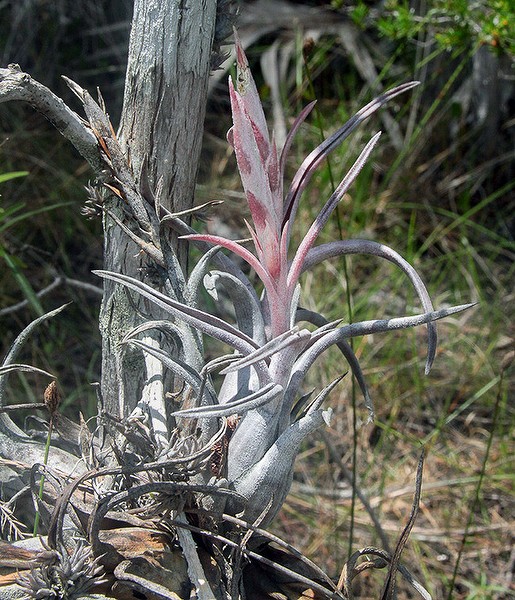
Potbelly Airplant, Tillandsia paucifolia, covered with tiny scales. The potbelly is the potential ant condo.
A less familiar adaptation of some of our local Tillandsias, in particular those with expanded “potbelly” bases, is housing ants. Varied Tillandsias foster symbiotic relationships with ants, often members of the genus Crematogaster, Acrobat Ants, which typically live in trees. Let’s see how the happy marriage may work:
Benefits to the ants: Spaces between the leaf-bases in the potbelly plant base are protected dry nesting sites. Our local Northern Needleleaf Tillandsia has nectar glands outside the flowers. These hosts provide room AND board to their guests.
Benefits to the Tillandsia: The ants are belligerent, believe me. Poke the potbelly and stand back! Nothing is going to bother that airplant and live. Sometimes the ants protect the host tree from destructive insects, and may remove pesky vines or competing epiphytes. Potentially even more important, and in need of more study, researchers think the ants fertilize their hostplant, especially with nitrogen, which is otherwise scarce up in a treehouse. The ants release nitrogen-rich waste, including uric acid, and they sometimes lug their compostable food and even soil up the treetrunk to the potbelly plant base. Oh yea, they die and decay too. The ant-colonized Northern Needleleaf in the photos is bigger and more robust than its antless neighbors.
Researchers reported 42% of the Northern Needleleaf specimens to have ants in their plants in Mexico and 25% in the Bahamas. It is tough to know how common ant colonization is in local populations of Northern Needleleaf, Potbelly Airplant, Banded Airplant, and others. Interestingly, there is a report of 10-15% of Potbelly Airplants studied in Florida having “weedy” ant colonies.
